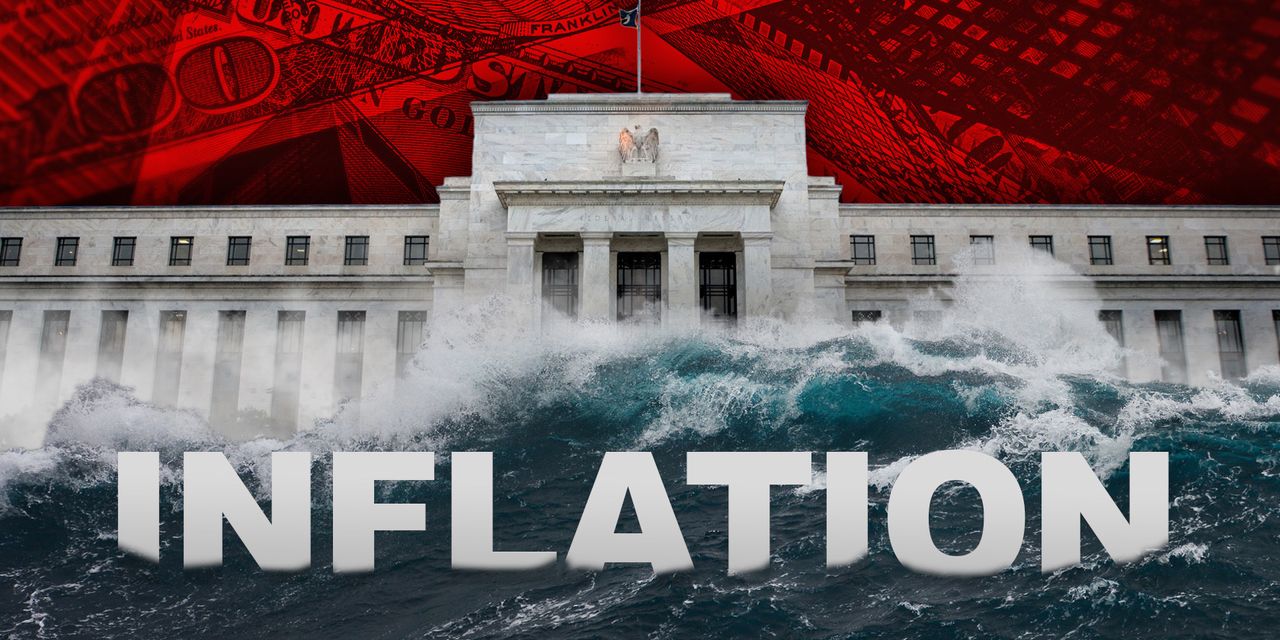U.S. stock futures steadied Thursday following the latest sell-off as traders paused for breath ahead of crucial inflation data.
How are stock-index futures trading
-
S&P 500 futures
ES00,
+0.15%
rose 8 points, or 0.2% to 3763 -
Dow Jones Industrial Average futures
YM00,
+0.08%
added 56 points, or 0.2%, to 32583 -
Nasdaq 100 futures
NQ00,
+0.28%
climbed 24 points, or 0.2%, to 10854
On Wednesday, the Dow Jones Industrial Average
DJIA,
fell 647 points, or 1.95%, to 32514, the S&P 500
SPX,
declined 80 points, or 2.08%, to 3749, and the Nasdaq Composite
COMP,
dropped 263 points, or 2.48%, to 10353. The Nasdaq Composite was down 35.5% from its record close of 16057.44 hit November 19, 2021.
What’s driving markets
Index futures were a touch firmer but sentiment was fragile as investors warily eyed looming crucial inflation data that may determine the future pace of Federal Reserve interest rate hikes.
Analysts cited a range of issues including uncertainty over the final outcome of the U.S. midterm elections and worries about crypto contagion as having contributed to the sell-off.
“That decline in risk appetite comes ahead of the latest U.S. CPI data for October,” noted Henry Allen, strategist at Deutsche Bank. The report is due at 8:30 a.m. Eastern.
“This is one of the most important variables for the Fed as they consider whether to slow down their pace of rate hikes next month, although it’s worth bearing in mind that there’s still another CPI report after this one before their next meeting,” Allen added.
Economists forecast that headline year-on-year CPI growth will fall to 7.9% from 8.2% in September, and that core CPI will dip to 6.5% from 6.6%.
Such elevated levels of inflation have forced the Fed to raise borrowing costs from effectively zero at the start of March, to a range of 3.75% to 4%. This shift has left the S&P 500 down 21.4% for 2022.
Consequently, the prospect of either a benign or harmful inflation report causing large market moves is expected by many traders.
“Thursday’s CPI report could be the most volatile time this week, with SPX at-the-money straddles [an option strategy] pricing in a 2% move. As discussed, the hyper-weakness in Technology combined with the uptick in cross-asset volatility have most market participants wondering whether this will metastasize across global risk assets, ” wrote Mark Newton, head of technical strategy at Fundstrat, in a note.
Adding to trader angst on Thursday were concerns that the latest crypto crisis – where the rescue of FTX by Binance fell through – could further reduce market liquidity and harm broader market sentiment.
“While the bust from bitcoin $68,991.95 [to the current sub $17,000] has erased more than $2 trillion in crypto value, contagion, beyond the sharp generalized tightening of financial conditions in response to the Fed’s hawkishness has, until now, been absent, ” said Julian Emanuel, senior strategist at Evercore ISI, in a note.
But he warned that “In a year where ‘left tail outcomes’ are commonplace, bitcoin moving below the 2019 high at $13,850 will elevate stress, ending the current equity bear market rally and reinforcing our view that 10/13 was ‘a’ low, not ‘the’ low”.
However, in early trading on Thursday, Bitcoin
BTCUSD,
was recovering some ground, adding 6.7% to $16,845.
